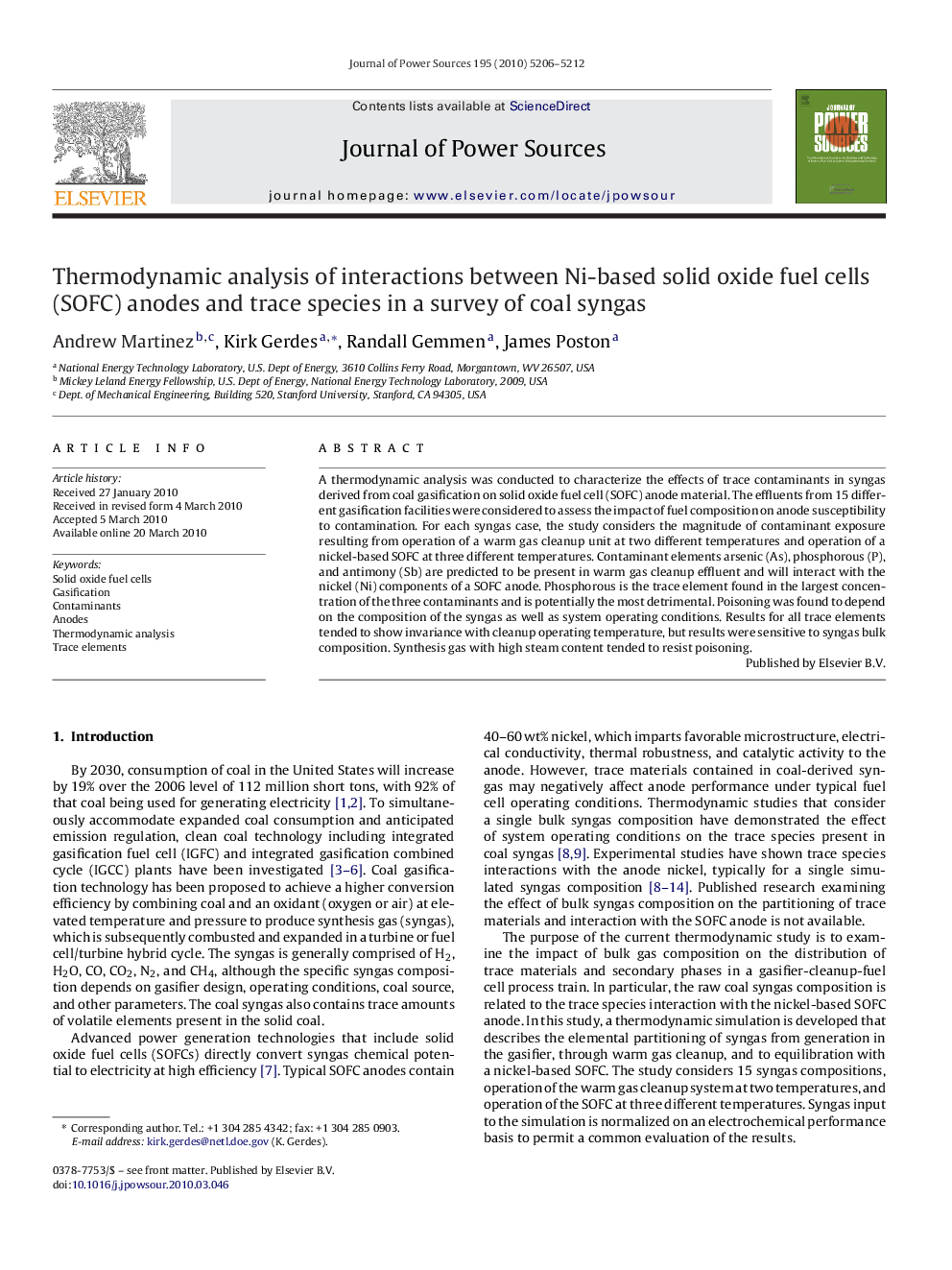| Article ID | Journal | Published Year | Pages | File Type |
|---|---|---|---|---|
| 1284918 | Journal of Power Sources | 2010 | 7 Pages |
A thermodynamic analysis was conducted to characterize the effects of trace contaminants in syngas derived from coal gasification on solid oxide fuel cell (SOFC) anode material. The effluents from 15 different gasification facilities were considered to assess the impact of fuel composition on anode susceptibility to contamination. For each syngas case, the study considers the magnitude of contaminant exposure resulting from operation of a warm gas cleanup unit at two different temperatures and operation of a nickel-based SOFC at three different temperatures. Contaminant elements arsenic (As), phosphorous (P), and antimony (Sb) are predicted to be present in warm gas cleanup effluent and will interact with the nickel (Ni) components of a SOFC anode. Phosphorous is the trace element found in the largest concentration of the three contaminants and is potentially the most detrimental. Poisoning was found to depend on the composition of the syngas as well as system operating conditions. Results for all trace elements tended to show invariance with cleanup operating temperature, but results were sensitive to syngas bulk composition. Synthesis gas with high steam content tended to resist poisoning.
